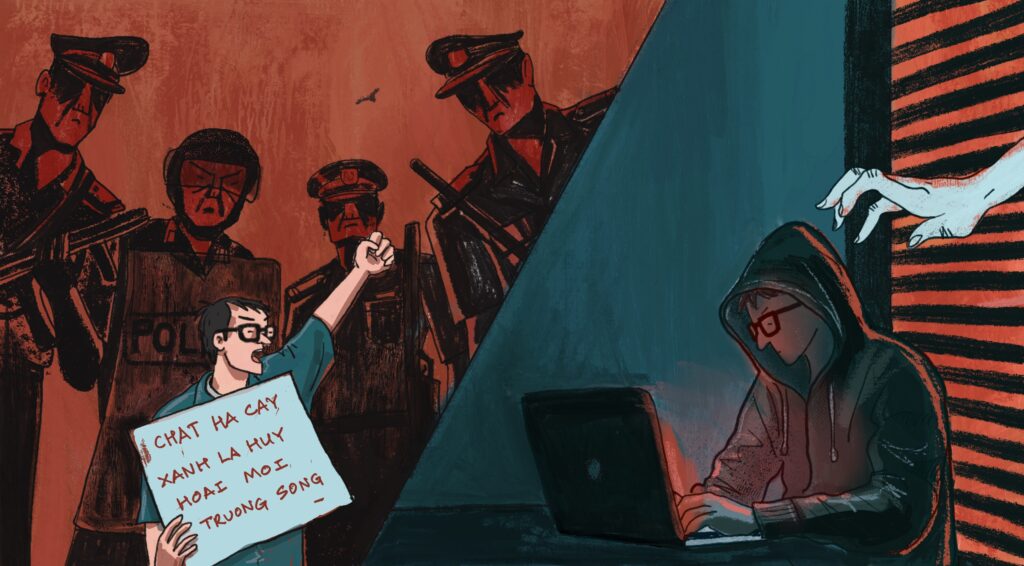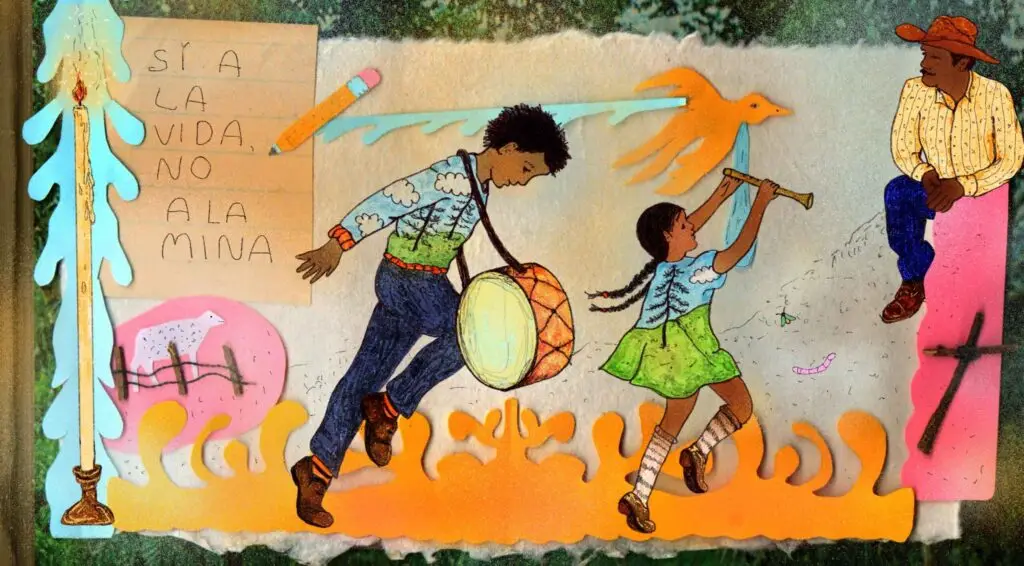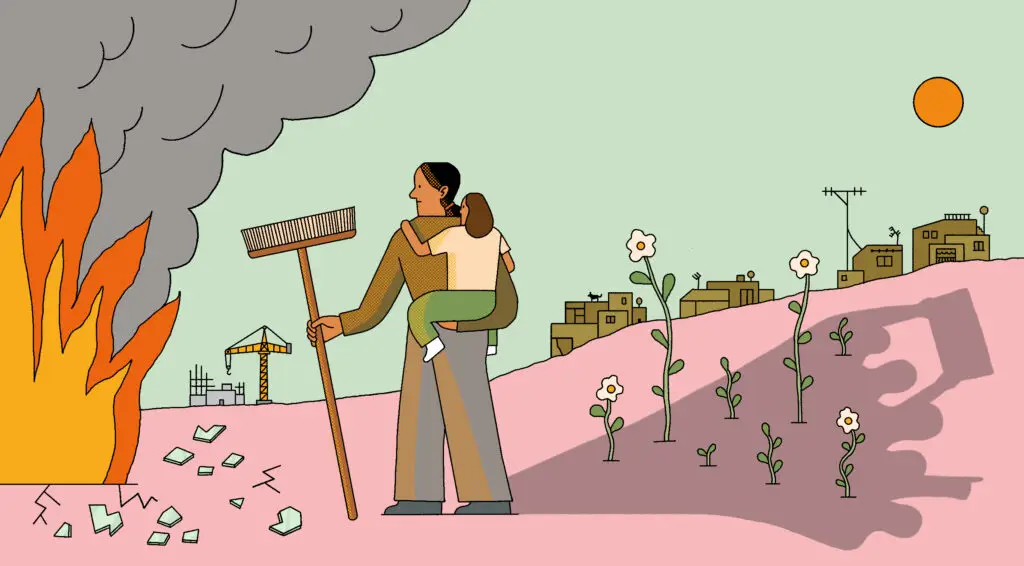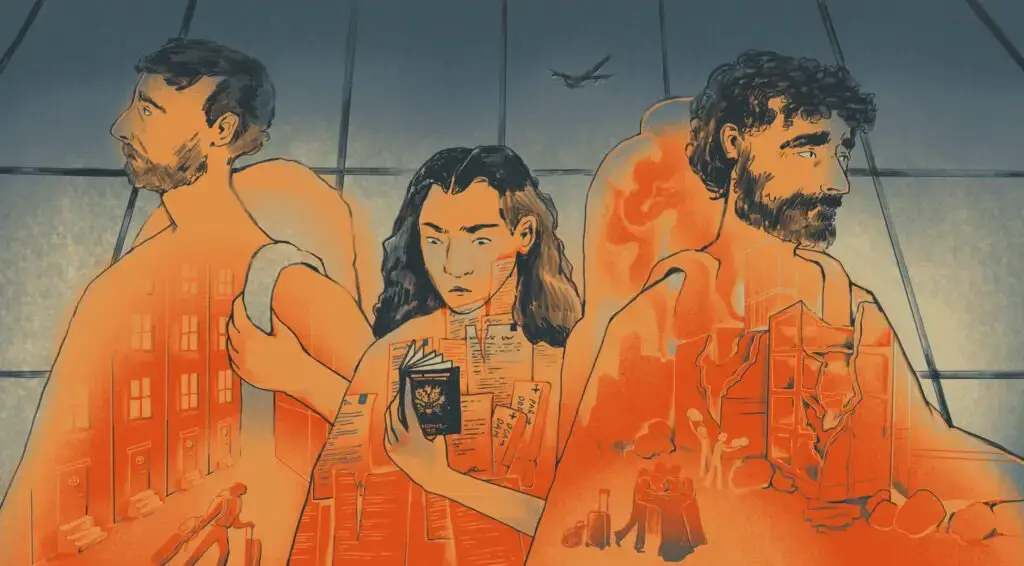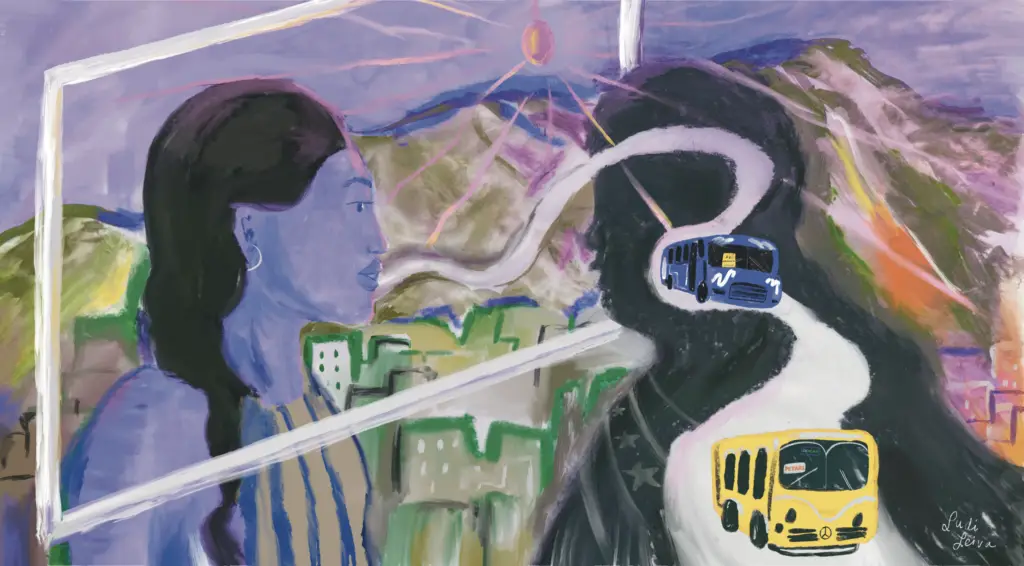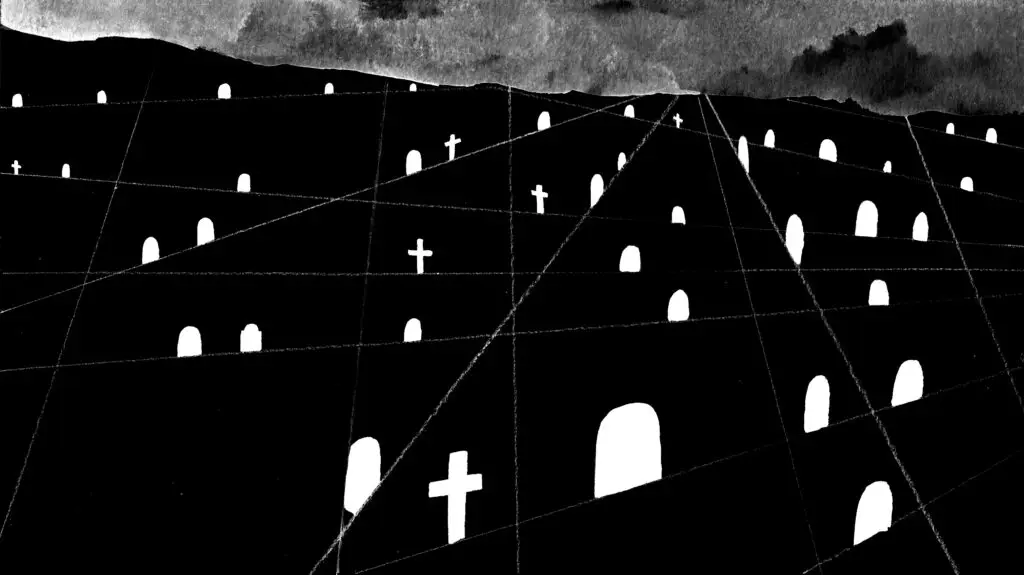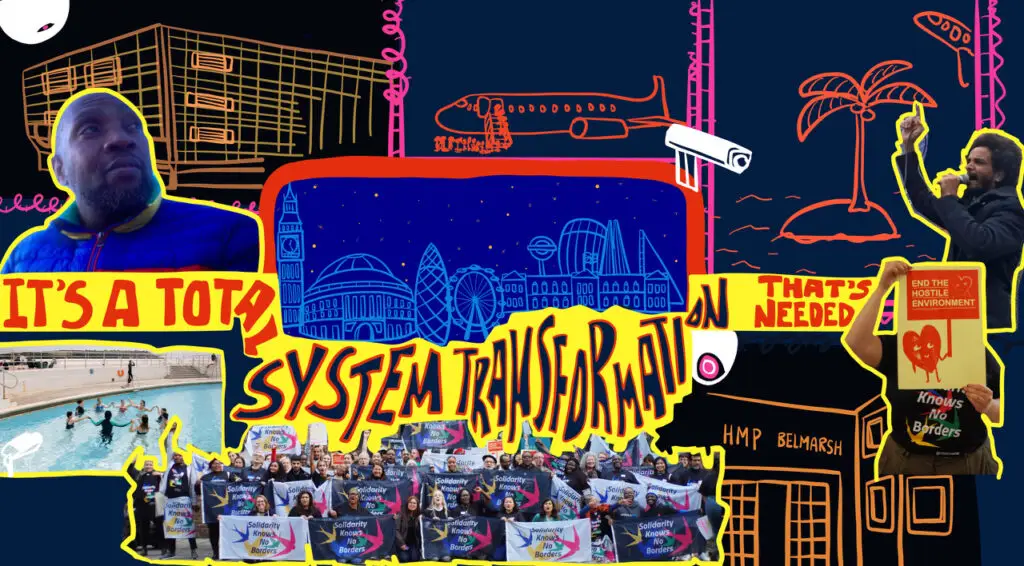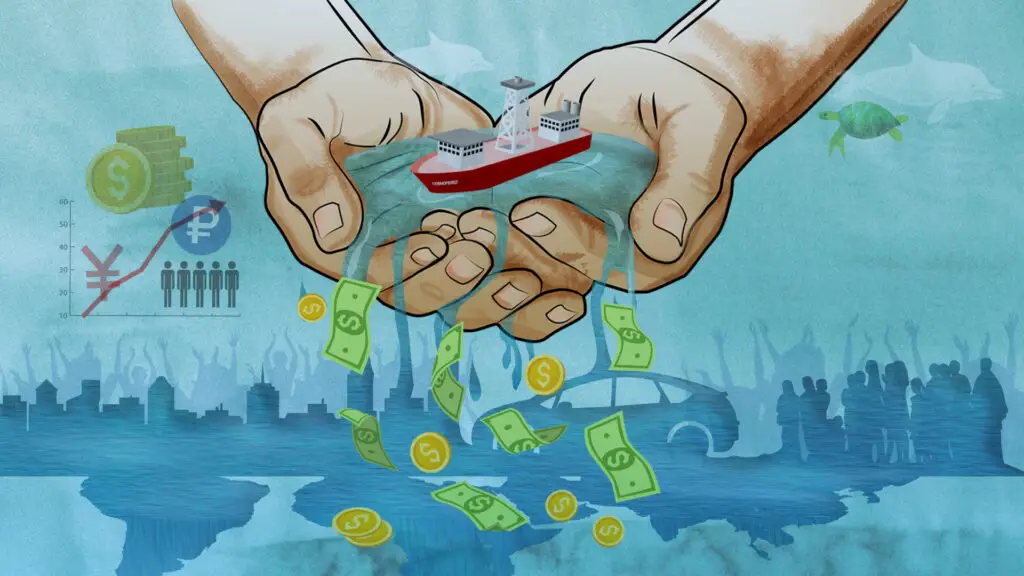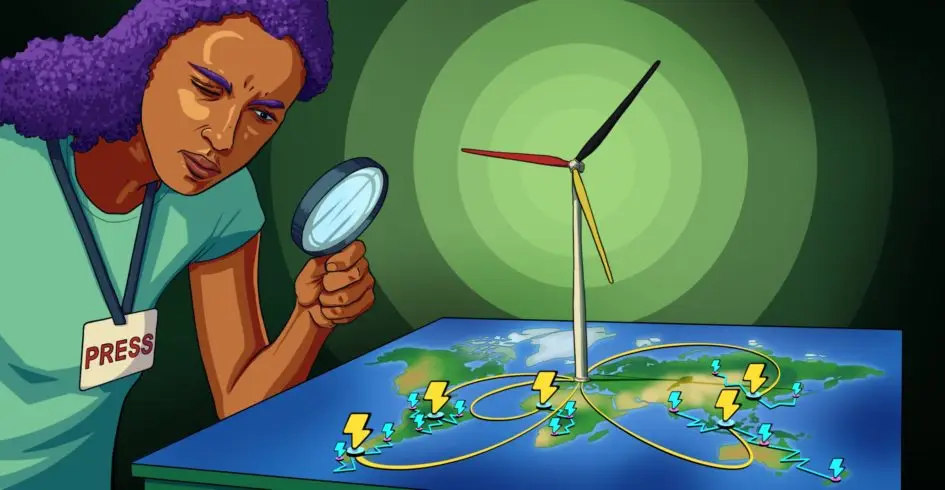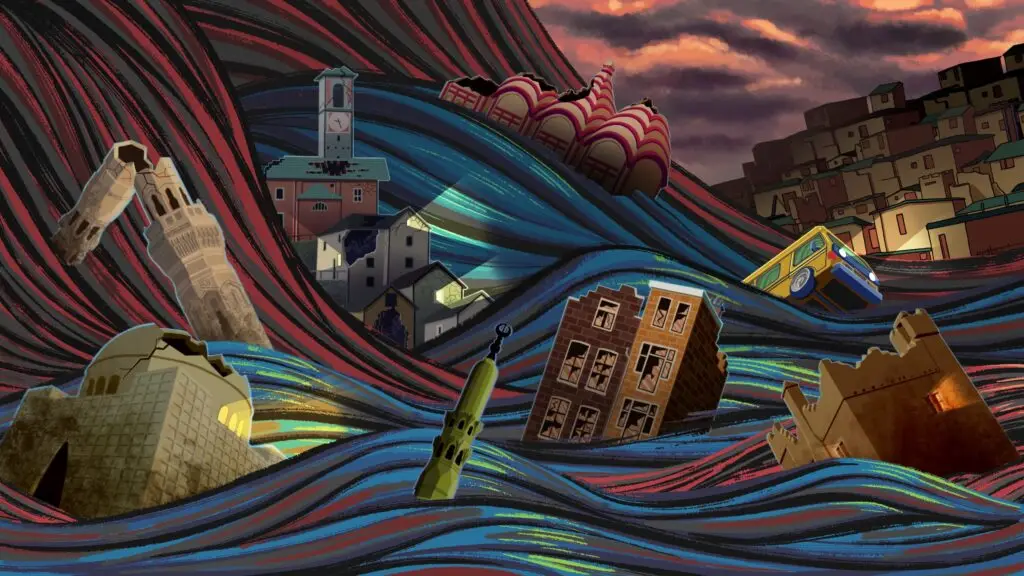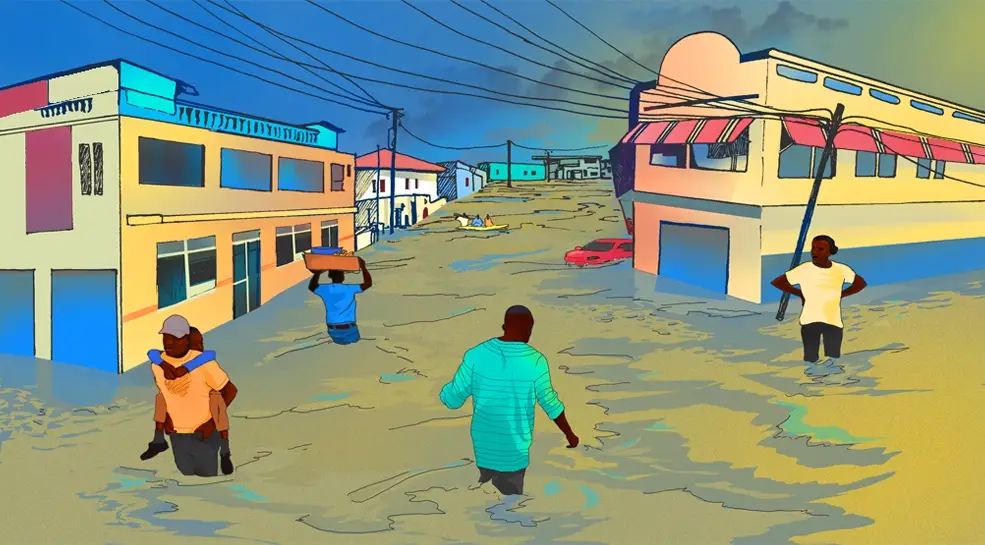
History at risk: Port Maria, birthplace of Jamaica’s first slave revolt, braces for climate change impact
- Written by Gladstone Taylor
- Edited by Tina Lee
- Illustration by Charity Atukunda
This port town, the first place Christopher Colombus landed in Jamaica, has withstood conquest, colonialism and rebellion. But will it survive increased rains and flooding brought on by climate change?
Port Maria, St. Mary is a little-known town on the north east coast of Jamaica with a seaside view that is arresting to say the least.
Often described in weather reports as overbearingly sunny on its better days, this little traversed town has a history that is as unsuspecting as the rolling hills and communities that surround it. Negril’s West end beach view, or Treasure Beach’s South coast view are similar in their countryside coastline look, and Portland’s misty, east end views are typically shrouded in thick forests and mild to heavy precipitation to match its heat.
Port Maria is an old colonial town with a unique view that is less traversed, but more exposed to the elements, where it hardly rains or floods, until it does.
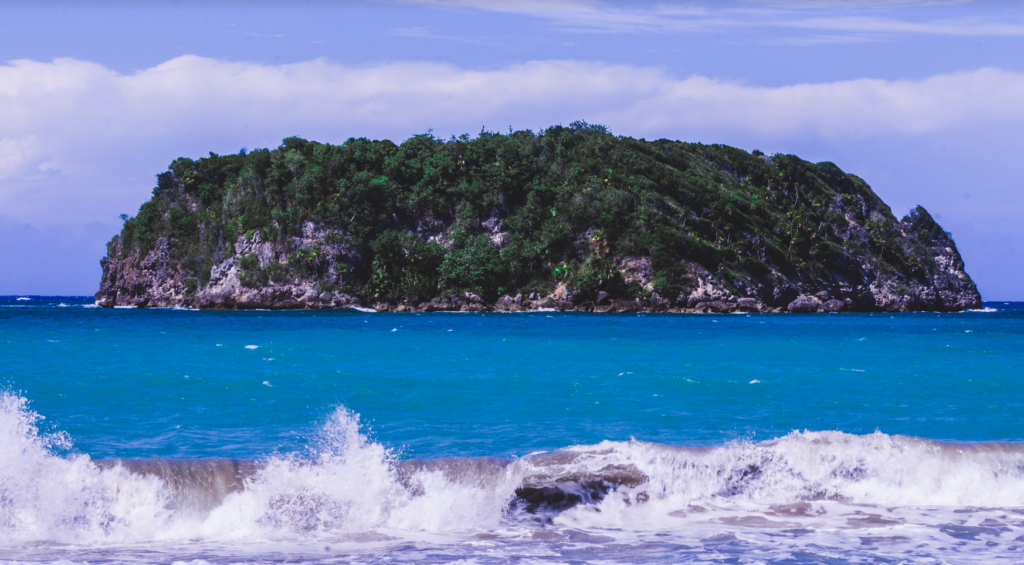
Although Jamaica, one of the Caribbean’s top tourist destinations, is somewhat a celebrity on the world stage, the country’s nuanced history and culture is rarely represented well, even in its most famous depictions. A centuries-long colonial history, though checkered and conflicted, is a part of the bedrock of the island’s cultural diversity and superpower.
The stories of those who were already here, the ones that came and even those that were brought, all coalesce to create a rich tapestry and a colorful nation of people. Chief of these stories concerns the battles fought by indigenous people and runaway slaves against the British and Spanish colonial forces and how that fractured history is distributed across the different provinces or parishes on the island. Port Maria in particular holds a special place in history as the second town established by the Spanish settlers who first colonized the island.
Britain began its successful campaign in the year 1655, under the leadership of General Robert Venables and Admiral Sir William Penn, father of the famous American writer who became namesake of Pennsylvania, to overthrow the Spanish rule in Jamaica. Between 1760 and 1761, Port Maria again became ground zero for the first slave rebellion, led by a Ghanaian chief called Tacky, that later spread to parishes like St Thomas, which is famous for the 1836 Morant Bay Rebellion. A monument erected in the chief’s honor sits, well kept by the town’s municipal department, overlooking the Port Maria harbor.
The history of this charming Port town is sprawling, there’s just one issue. Every few years, the town is hit by devastating floods that cover certain portions of the town. However, this year, the town has seen the worst flood in its history, with waters covering the entire town, totaling hundreds of million of dollars in property damage and repairs.
A flood isn’t particular news, even the town’s mayor, Richard Creary, concedes that it sits below sea level. But this level of rainfall and flooding is unprecedented.
Signs of vulnerability
Studies by Nature Communications with an updated analysis show a much faster melting of the Greenland ice sheets than previously estimated for this year. The rise in sea level, accompanied by warmer temperatures, creates more water in the atmosphere and ultimately more rains during the wet season for Jamaica. Flood levels due to the rainfall rose up to five feet in many areas according to Dr. Morais Guy, Member of Parliament for St. Mary Central, where Port Maria is located.
Port Maria is, in a sense, a case study of how devastating even a small rise in sea level can be for small islands in the tropical regions of the world.
A closer look at the conditions around the flood reveals other culprits besides climate change. Port Maria is not only below sea level, it is situated on a watershed. A watershed or drainage basin is an area of land where water is channeled into a river, sea, bay or other collection of water. In Port Maria’s case, the Otram river runs right through the town.
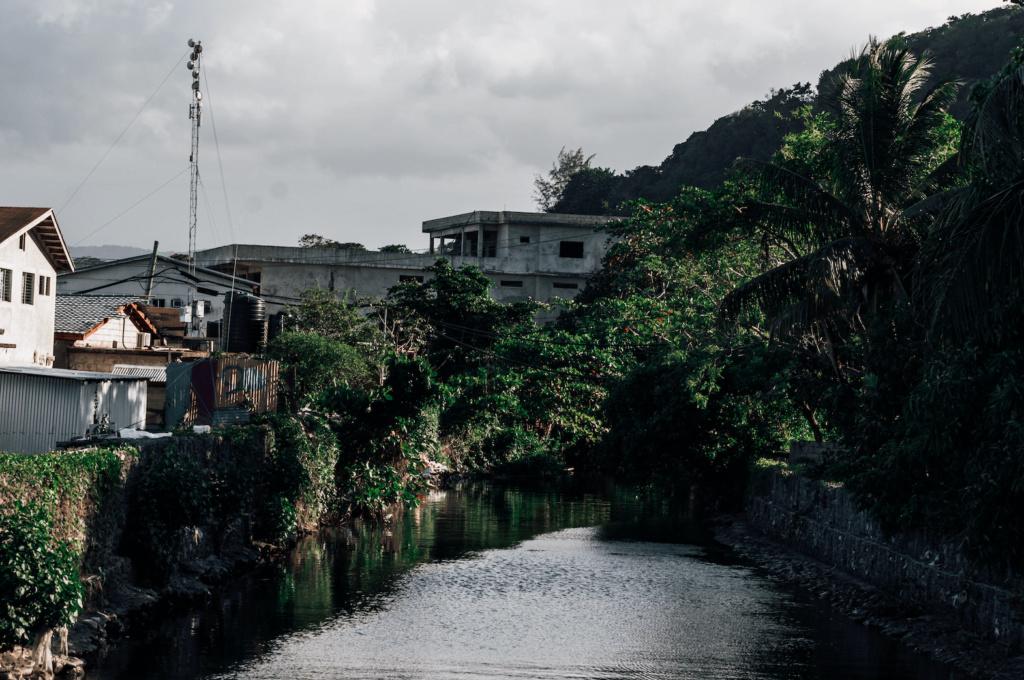
According to a study by Dr. Arpita Mandal, Senior lecturer in the department of Geology and Geography at the University of The West Indies, and her colleague Anuradha Maharaj of the IHE Delft Institute for Water Education, flood waters reach up to an unprecedented high of 13-14 inches. The study, titled “Flooding in Jamaica with assessment of riverine inundation of Port Maria, St Mary”, examines the factors contributing to the town’s history of flooding.
“The watershed is ungauged. Gauge is a type of equipment in the river that can measure the flow. So without that, there’s no early warning system to let people know that the water level in the river has gone up so they should evacuate,” says Dr. Mandal when we speak over the phone in mid-March about the February flood.
Warmer oceans and more rains are compounded by other issues like drainage that create a worsening cycle of environmental decay.
Disruption to drainage
Fishers on the Port Maria harbor like Richard Nelson report an increase in squatting on key drainage areas that would ordinarily serve as an escape for rising waters. “It’s getting worse because now you have buildings that aren’t in the right place. Certain people haven’t built under the right building code. So you find that certain places where the water used to run, buildings are there now and the water either has to find a different route or it’s backed up.”
Nelson, who has been fishing from the port for roughly thirty years, bemoans the devastation in the town when it rains. Fishers are forced to evacuate the beach and store their boats and equipment.
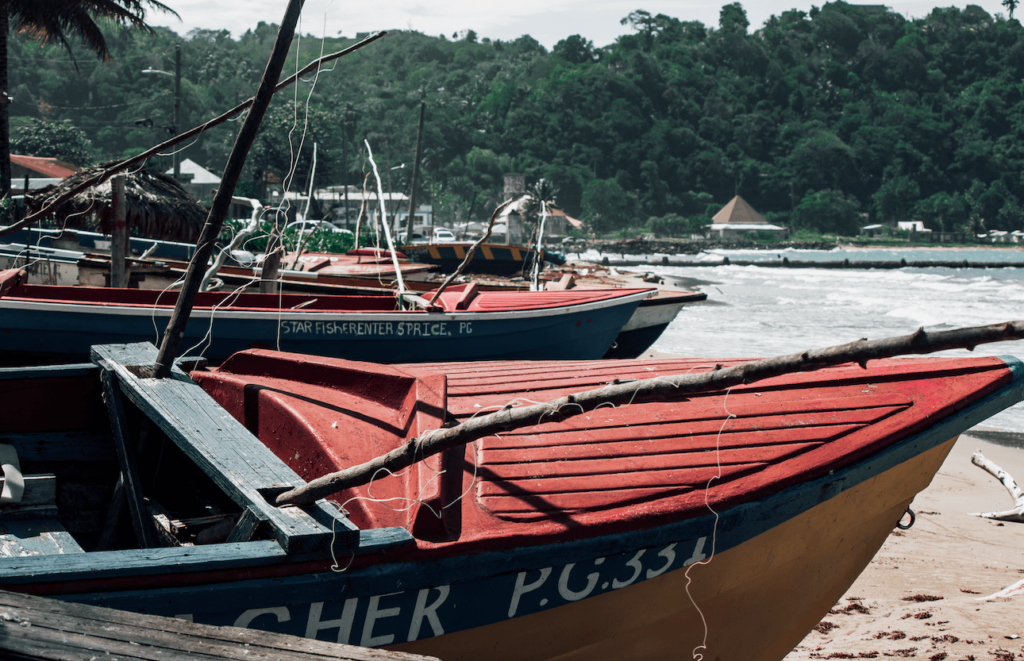
Most troubling to these fishers perhaps is the effect the runoff has on the reef after floods, according to Michael Mobir. Michael has fished on this port for what he says must be over forty years. “The seasons are not like they used to be. During certain seasons you could expect to catch x amount of fishes. For instance if it was Tuna season, this time you would catch a lot, but not anymore. Most likely it’s either climate change, or there’s too many chemicals leaving the land into the water.” The eldest of the several fishers I speak to along the harbor, Michael is also the most revered, going by the nickname ‘Jah Mikes’. His experience is legendary, so he’s been able to observe the effects of the runoff firsthand.
“The flood itself, if it passes through a farm, for instance that uses a lot of pesticides, all of that is coming to sea. If it passes through an oil station with a lot of oil, all of that oil is coming to sea. Those things damage the reef in such a way, we can hardly survive just by fishpots. You could do that once, but not anymore” Michael says, shaking his head despondently.
The problem of February's flood
It’s not just the fishers whose livelihoods are at risk. This last flood saw the closure of over one hundred businesses in the town area. Although Port Maria’s proximity to the high traffic tourist destination called Ocho Rios, in the neighboring parish of St Ann, has seemingly made it a low priority for the Jamaican government, their response to the flood was swift.
According to the Mayor of Port Maria, Richard Creary, some 800 cheques were issued by the government in response to the flood for individuals adversely affected. He also confirms the squatting reports by fishermen in key drainage areas during an interview with Unbias the News. “What we found is that based on some squatting that took place in an area called Frontier — back in the day when it was a banana walk, there were some drains that were taller than me, and I was six feet. With the squatting, what has happened is that all those drains have been filled up.”
Port Maria’s mayor also provided more historical context for the town being established below sea level. “We inherited what we have here today, it was established centuries ago. Probably because of the port, we did a lot of exporting of banana, coconut, sugar cane and so on back in the day. There were two ports so I guess that’s how the town developed.”
The issue here is that many cities like Port Maria, even those above sea level, are projected to go underwater by 2100 because of sea level rise. There is a strong movement in places like the United States to relocate coastal cities and towns further inland as the oceans continue to rise. Still, no word from the mayor about a decisive relocation initiative for Port Maria, but he did divulge some of the work being done to restore and reinforce the city against future floods.
I heard the Prime Minister mention that it is not impossible to move a town. In Jamaica, however, I’m not sure if we have the resources to do such a thing at this time.
Richard Creary, Mayor of Port Maria
“So what really needs to happen is that the drainage needs to be upgraded, the river needs some dredging as well because there are areas where it has gotten more shallow than it used to be,” Creary continued.
A popular technique used by urban planning specialists all over the world called river training, aims to divert a river’s flow into secondary channels using various means such as cutoffs, and walls in an effort to reduce flood levels. “Some years ago river training was done, if you notice certain places there are gabion walls, and whenever we have flooding water does not bridge those walls. So that river training needs to go all the way up to Trinity. The NWA did a drainage plan some years ago that we were privy to and I’m told they are revising that plan as we speak” Mayor Creary is a politician through and through, but he didn’t lie.
Even Dr. Arpita’s early warning system recommendation seems to be closer to a reality for Port Maria, as the mayor highlighted a commitment from Dezmond McKenzie, Minister of Local Government and Rural Development and the Office of Disaster Preparedness (ODPEM) to install it in the near future.
It’s clear the government is leaning toward protecting and preserving the town, rather than relocating. Minister of cClture Babsy Grange among others visited Port Maria on April 8th for a celebration and official naming of the day as Chief Tacky day. Despite reaching out to the Ministry of Housing, Urban Renewal, Environment and Climate Change, for an audience with councilor Matthew Samuda, they were unavailable for comments or statements on the matter.
The concern for coastal towns that are typically underserved like Port Maria is founded in tangible evidence of serious vulnerability. This most recent flood is the worst in recent memory according to even fishermen who’ve been casting lines for over forty years and it took place in February. February is usually one of the driest months for Jamaica in general, and the flood was devastating.
Although local government and the municipal department in town promise reinforcement and upgrades to drainage issues, February’s flood begs a chilling question. What will happen in June when the official wet season for Jamaica begins? The hope is that Mayor Creary’s predicted upgrades will come into effect before it really starts to rain. Meanwhile other coastal cities like Montego Bay on Jamaica’s west end are also plagued by similar floods in recent times, reinforcing the concern for the future of coastline cities in the tropics.
Gladstone Taylor is an author/journalist living and operating out of the creative industries of Kingston, Jamaica. He has been writing professionally for over 8 years. He’s reported on the environment, culture, music, film and tech, through platforms such as Mongabay, The Fader, Sole DxB, Bandcamp, The Face Magazine, RollingStone, Afropunk, Syfy Wire and PopDust to name a few.
Please consider a donation to support the work of our feminist newsroom. We create a space for journalists facing structural barriers, working towards a more equitable, inclusive world of journalism. Join our mission today!
Related Posts
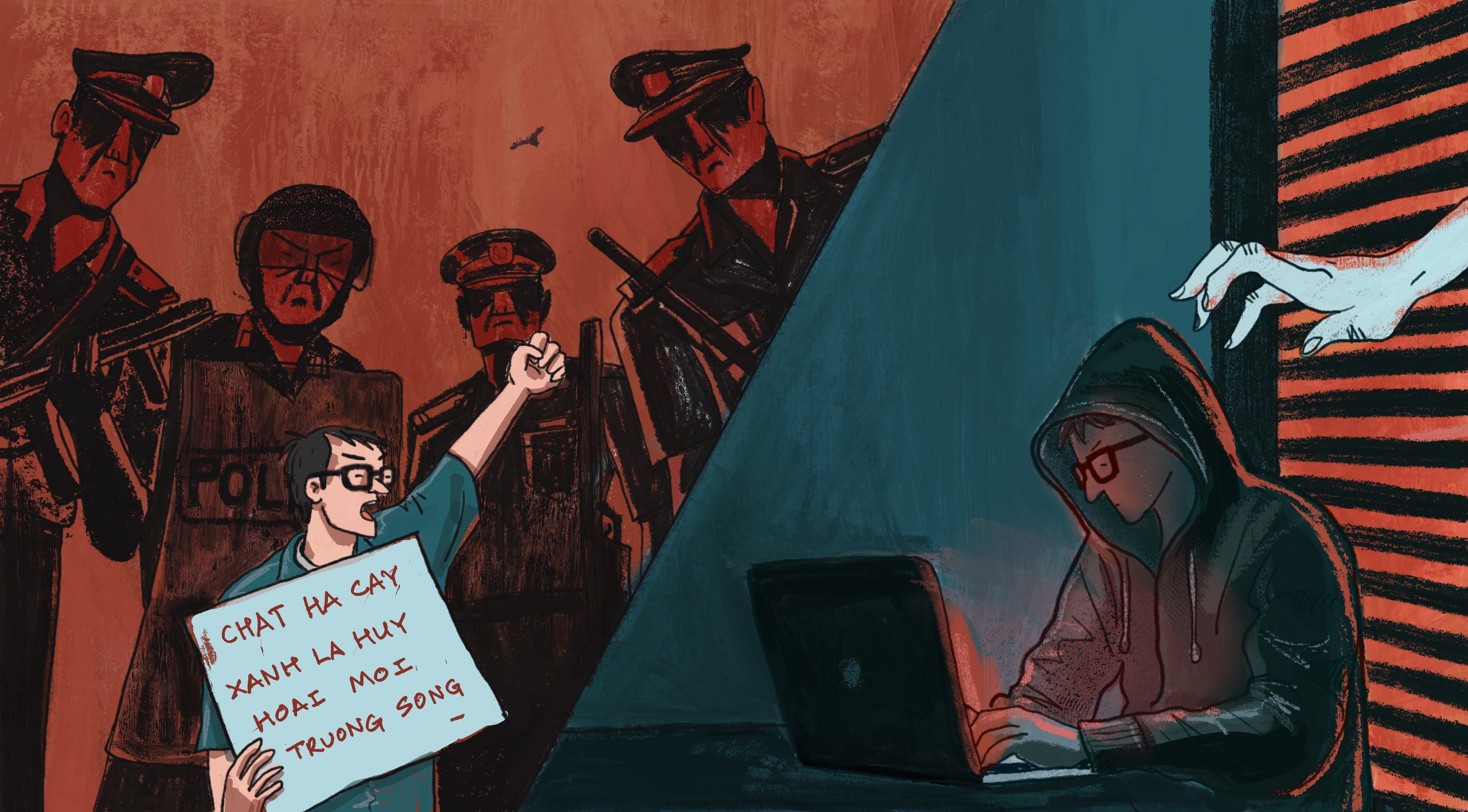
Vietnamese activists’ dilemma: Go public and risk reprisals, or go undercover and go it alone
Arrests of high-profile campaigns suggest that even those working on government-approved green initiatives with international backing aren’t safe from Vietnam’s crackdown on environmental activism. But some warn that staying below the radar can be even more dangerous.
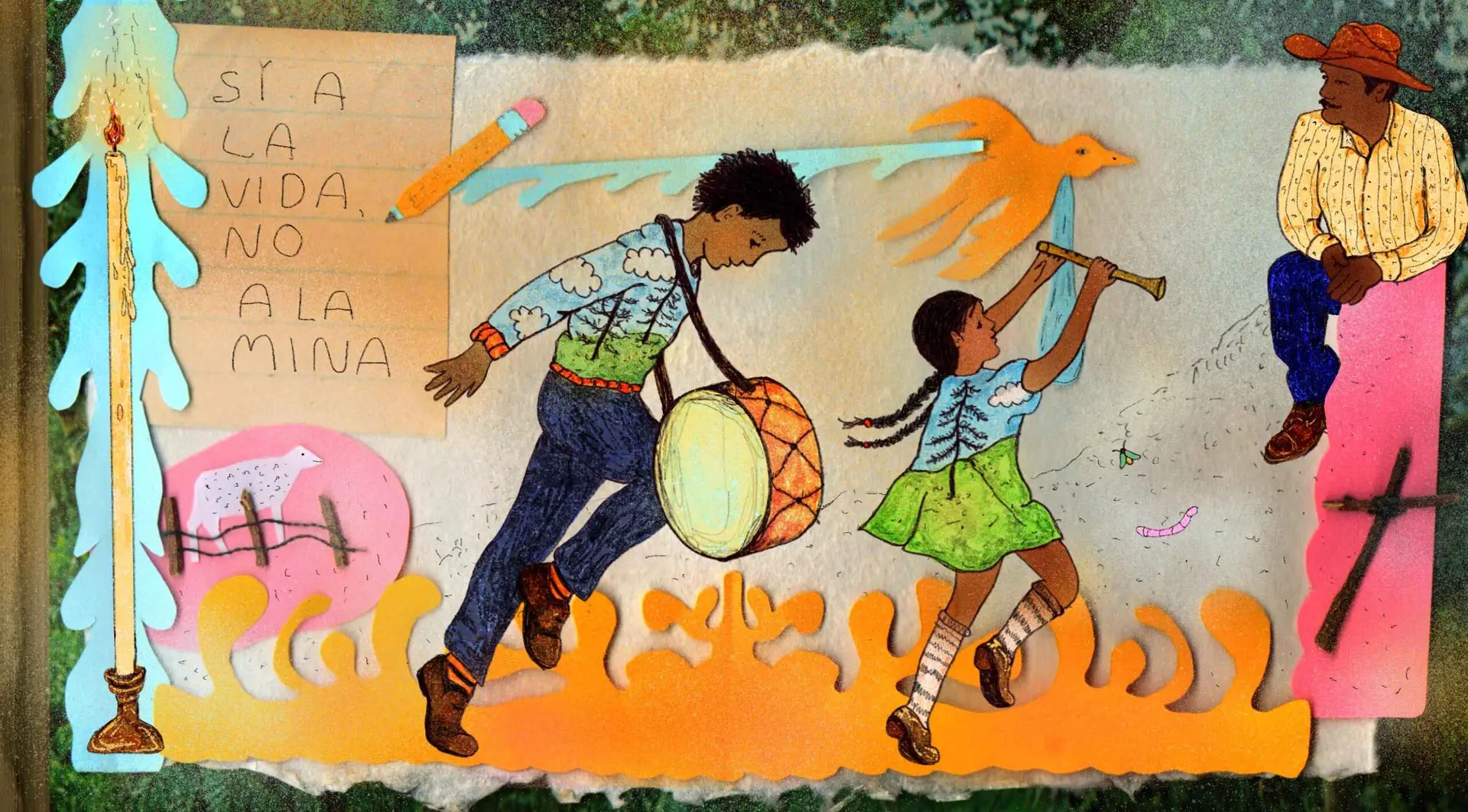
Capulálpam de Méndez: A struggle for land and memory
After a Canadian mining company challenged a Zapotec community’s Indigenous identity, recalling the ancestral names of sacred landmarks helped reinvigorate their connection to the land – and defend it from extractive industries.

San Pedro Sochiapam: First the birdsong, then the whistles
In a remote community enveloped in cloudforest, a whistled form of the Indigenous Chinantec language is perfectly adapted to the land and its weather. But who needs whistles when you can use WhatsApp?
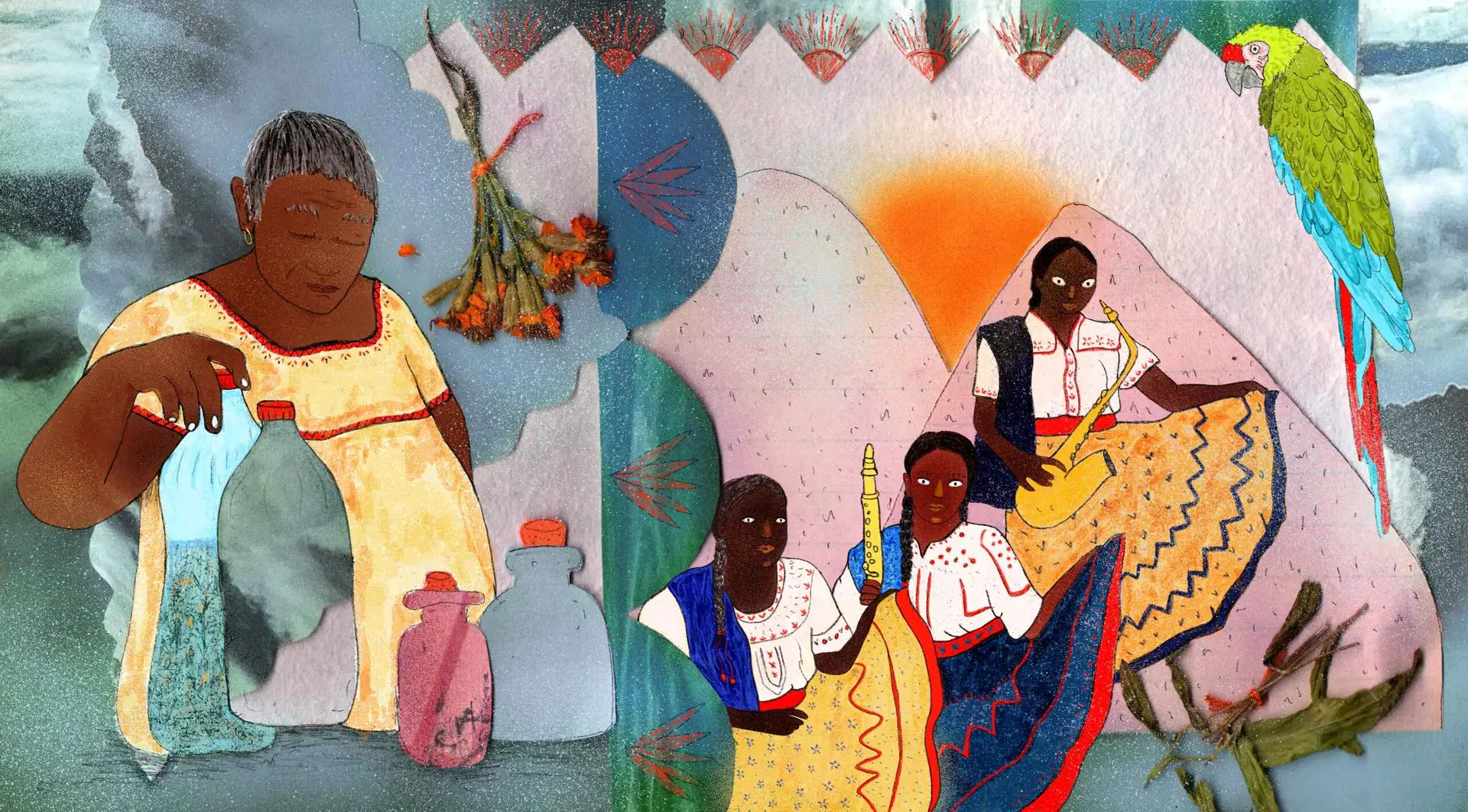
Sierra Mixe: A conversation with Mother Nature
Medicinal wisdom is embedded in Indigenous Mixe languages. By sustaining their mother tongue and practices involving herbs and healing rituals, Mixe people keep alive a cosmovision in which they speak to Mother Earth.
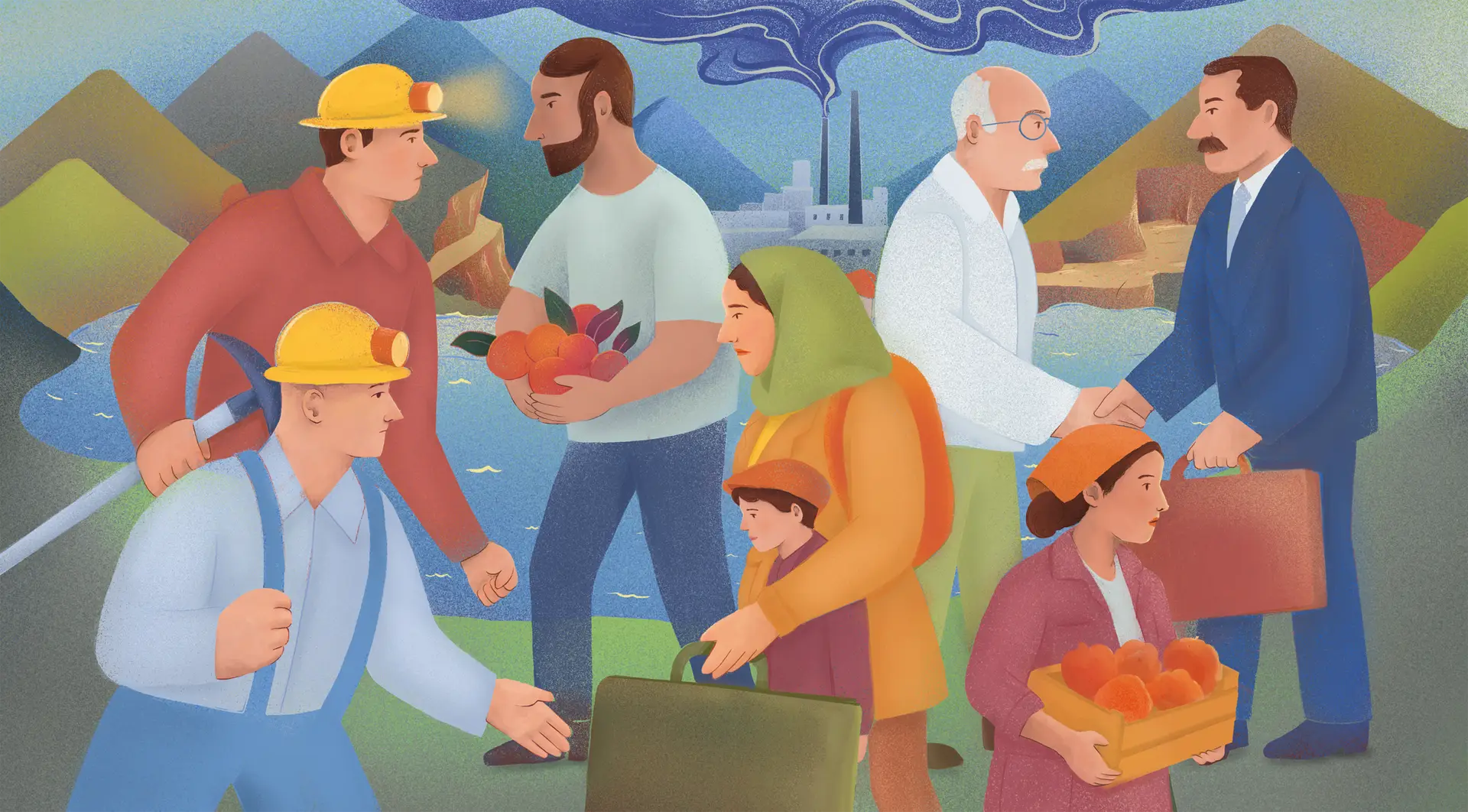
Foreign capital, local burden: Who benefits from mining in Bosnia?
When foreign companies restarted mining operations that had been shuttered since the breakup of Yugoslavia, Vareš had high hopes of economic revival. But as the state fails to take a stand against pollution and deforestation, optimism has given way to nostalgia for the socially owned mines of the communist era.


